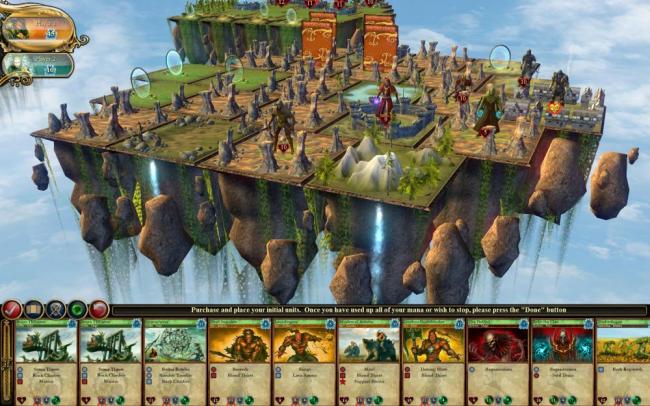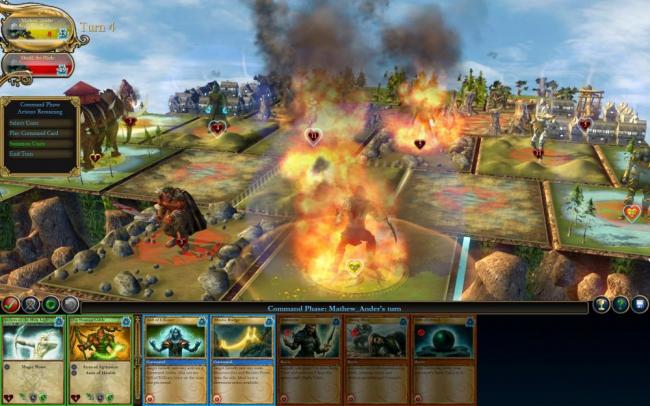- Wondering how to get Monopoly GO! free rolls? Well, you’ve come to the right place. In this guide, we provide you with a bunch of tips and tricks to get some free rolls for the hit new mobile game. We’ll …
Best Roblox Horror Games to Play Right Now – Updated Weekly
By Adele Wilson
Our Best Roblox Horror Games guide features the scariest and most creative experiences to play right now on the platform!The BEST Roblox Games of The Week – Games You Need To Play!
By Sho Roberts
Our feature shares our pick for the Best Roblox Games of the week! With our feature, we guarantee you'll find something new to play!All Grades in Type Soul – Each Race Explained
By Adele Wilson
Our All Grades in Type Soul guide lists every grade in the game for all races, including how to increase your grade quickly!
Guardians of Graxia Review
If you’re one of those gamers who cut their teeth on classic role-playing or fantasy board and card games, like “Dungeons & Dragons” or “Magic: The Gathering,” the intricate gameplay of Guardians of Graxia will feel like warm kabocha soup and a Snuggie on a frigid night.

Follow-up to the board game version borrows elements from turn-based fantasy card games to deliver a comple
If you’re one of those gamers who cut their teeth on classic role-playing or fantasy board and card games, like “Dungeons & Dragons” or “Magic: The Gathering,” the intricate gameplay of Guardians of Graxia will feel like warm kabocha soup and a Snuggie on a frigid night.
It’s the follow-up to a board game version of the game, in which players engage in warfare among intrepid warriors and magical creatures. Players draw cards that yield an extremely wide array of effects that can benefit you in battle. The PC go-around follows the same formula. Situated upon continents floating high in the sky, you’ll be in the thick of warring armies of humans, goblins, dragons, elves, orcs and other formidable fighters.

The first thing you’ll notice is the daunting gameplay—potentially, the really daunting gameplay. If social Facebook games are more your wheelhouse, you’ll want to approach Guardians of Graxia with an open mind and a lot of patience. (Good thing that the game offers a solid in-game tutorial.) The actual concepts aren’t too hard to grasp—there’s just a lot to take in. Basically, you’re given an objective, like defeat a certain enemy, or capture a certain castle. In combat, you’ll “draw” from a “deck” of a couple hundred unit and spell cards (“units” are the characters who join your army, “spells” refer to magic that can assist them), and battle on many different terrains that present unique challenges. You’ll make a move, and then your opponent makes a move. Each move consists of an offensive and defensive phase.
With so much diversity and with so many options before you, lots of time will be spent strategizing, deciding when to buy additional units or spells and planning courses of attack based on location on the “board.” Gamers familiar with this kind of formula, found in such information-heavy (this game has its own in-game glossary), attention-demanding, turn-based fantasy games, will likely dive right into Guardians of Graxia. But for a lot of people, it’ll feel like repairing a bionic limb with an instruction manual in ancient Cuneiform.
One thing I would’ve liked to see is a random map generator, or better yet, the ability to create your own maps. As it stands, there are only four maps available, and a few more in the lengthier campaign mode (as opposed to the single-mission mode). Another common element that’s often found in these types of games—multiplayer capability—is absent.

But the compulsory strategizing makes the game something substantial to chew on, and it’s definitely worth the price tag. You’re only allowed to hold 12 cards in your hand at any given time, and it’s up to you if and when you want to buy more units and spells with your valuable mana. You’ll also use mana to activate spells and abilities, so be cognizant.
With such a juggling act of resources, numbers and battle plans, Guardians of Graxia definitely appeals to a certain breed of gamer. They’re gamers who’ll bask in the glow of their computer monitors for hours, exercising their brains in a challenging, involved and intellectually stimulating melee of goblin archers and mace-swinging crusaders—which is what this game is.

The good

The bad
More articles...
Monopoly GO! Free Rolls – Links For Free Dice
By Glen Fox
Wondering how to get Monopoly GO! free rolls? Well, you’ve come to the right place. In this guide, we provide you with a bunch of tips and tricks to get some free rolls for the hit new mobile game. We’ll …Best Roblox Horror Games to Play Right Now – Updated Weekly
By Adele Wilson
Our Best Roblox Horror Games guide features the scariest and most creative experiences to play right now on the platform!The BEST Roblox Games of The Week – Games You Need To Play!
By Sho Roberts
Our feature shares our pick for the Best Roblox Games of the week! With our feature, we guarantee you'll find something new to play!All Grades in Type Soul – Each Race Explained
By Adele Wilson
Our All Grades in Type Soul guide lists every grade in the game for all races, including how to increase your grade quickly!







